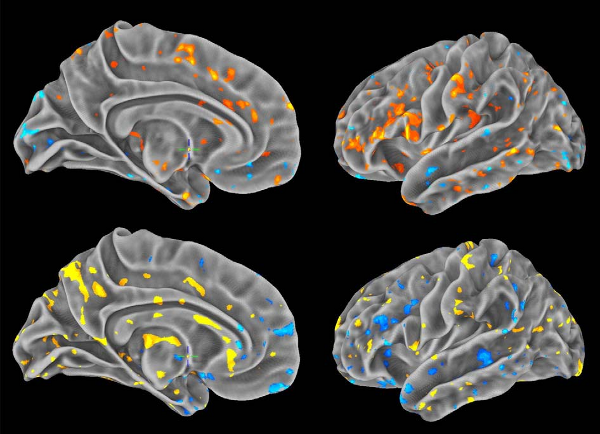
, . - decrease / increase font size
DEL - remove font from current set Home - restore font set to initial
Case Studies
Computational Neuroscience Application Research Infrastructure
Functional magnetic resonance imaging (fMRI) has led to an enormous growth in the study of cognitive neuroanatomy. Combined with advances in high-field electrophysiology, fMRI has led to a fast-growing field of human neuroscience.
Researchers led by Dr. Steven Small of UCalifornia Irvine developed a new computational framework that facilitates fMRI experimentation and analysis, and which has led to some rethinking of the nature of experimental design and analysis.

Graphical depiction of permutations of original data. Brain activity data were collected from 24 participants that were exposed to two experimental conditions. A single permutation consisted of (a) switching the condition labels of the experimental conditions, for 1 or more participants, (b) re-calculating the group-level effects, and (c) spatially clustering the results to identify what is the largest cluster found for the current permutation. This procedure results in a sampling distribution for the largest cluster in each permutation, which is then used to threshold the original data.
Approach. The Computational Neuroscience Applications Research Infrastructure (CNARI) incorporates novel methods for maintaining, serving, and analyzing massive amounts of fMRI data. CNARI uses Swift to describe, execute, and share parallel workflows, and relational database technology to provide new methods to organize and analyze experimental results.
Swift runs CNARI workflows on a wide variety of resources, including TeraGrid/XSEDE systems and institutional computing clusters. By using CNARI, it is possible to perform naturalistic, network-based, statistically valid experiments in systems neuroscience on a very large scale, with ease of data manipulation and analysis, within reasonable computational time scales.